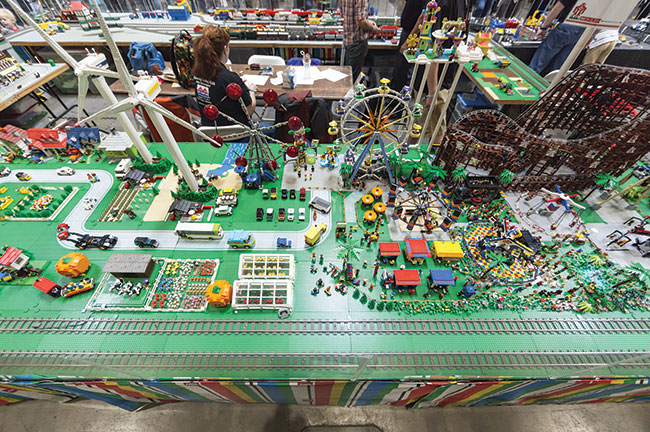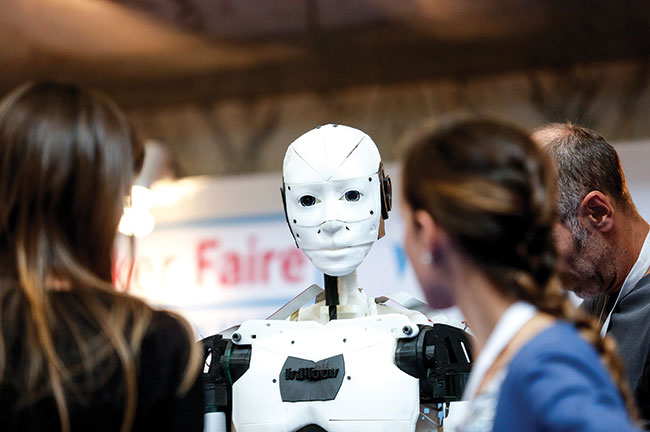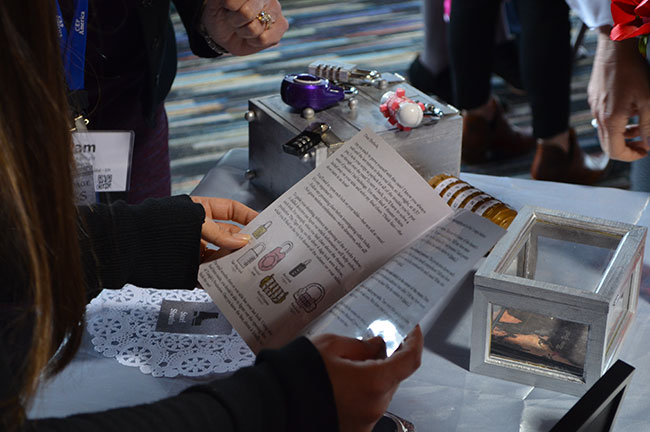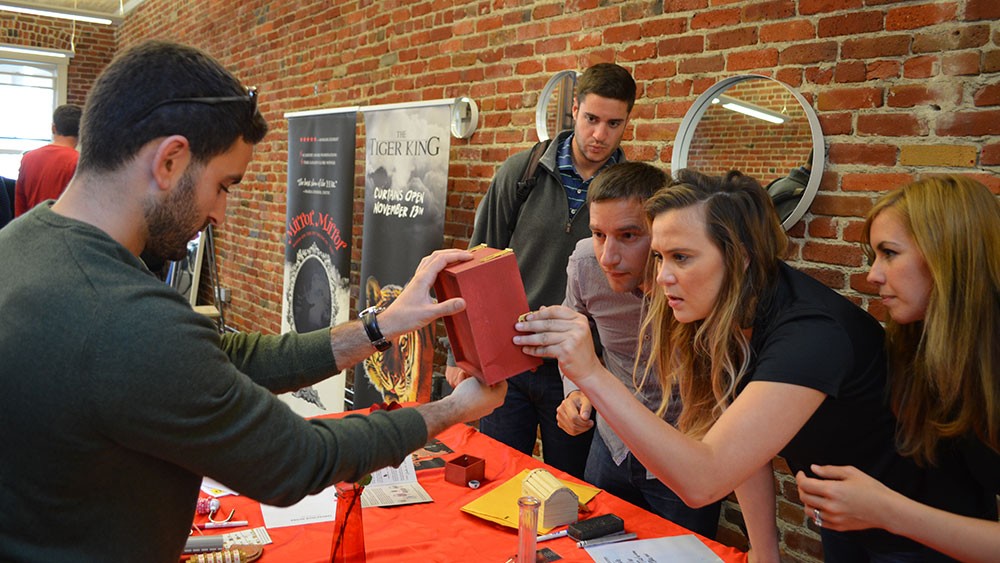With the lines between consumer and corporate events continually being blurred, attendees are increasingly demanding highly unique, high-touch environments.
These environments need to not only wow, but captivate and intrigue. Take shows such as C2 in Montreal or SXSW in Austin as examples of art, tech and business worlds colliding in ever-creative ways.
Planners must continue to look to societal trends as ways to boost engagement.
Following are five innovative experiential event options that borrow from popular culture to completely envelop attendees in the experience.
Experiential Trend No. 1: The Maker Faire
The terms “maker” and “makerspaces” are increasingly prevalent in today’s vernacular, largely thanks to a 2006 get-together of inventors and entrepreneurs at the first Maker Faire.
The landmark 2006 event was held in the San Francisco Bay Area.
Now, the global maker movement is booming, with more than 240 Maker Faires worldwide, including the upcoming San Francisco Bay Area edition in May 2019, expected to draw 100,000 attendees to the San Mateo County Event Center.
A Maker Faire is a community-based learning event that inspires everyone to become a maker and connect with people and projects in their local community.
The events are for people of all ages and backgrounds who have a desire to create, learn and share, and who bring a DIY mindset to technology and craft.

Building Station at a Maker Faire, Credit: DavidGilder, Shutterstock.com
Maker Media, publisher of Make: magazine, invented and produces Maker Faire, franchising the concept out to hundreds of places worldwide.
It also designs customized mini versions and activations for companies wishing to inject a bit of innovation and unique opportunities for engagement into their events.
“Maker Faire is essentially a DIY, family-friendly Burning Man Festival,” said Katie Kunde, senior director of partnerships and programs at Maker Media. “It’s a cross section of many different audiences, and it’s next-gen education. It’s the future.
“From electronics, robots and drones, to 3D printing, to a home-grown village that focuses on food and sustainability to large-scale art, it’s quite fascinating, and it includes everyone from makers showcasing small products to makers launching companies,” Kunde added.
[Related Content: The Future of Teambuilding Activities at Meetings]
Kunde said Maker Faire works with companies to engage them in sponsorship opportunities and has also collaborated with companies that have wanted to bring a Maker Faire activity, workshop or other element their events.
“It’s a unique way of bringing more life to an event through engagement and collaboration, and since we have so many connections to local makers in various places, it’s a wonderful way to bring a local element to the program,” Kunde said.
A past Intel Developer Forum (IDF), showcased what Maker Faire can do.
“We organized and invited a select group of makers to show off their projects during one of IDF’s evening networking events,” Kunde said. “It was a great icebreaker that inspired conversation and connection."

Maker Faire Robot Creation, Credit: Alessia Pierdomenico, Shutterstock
General Mills wanted to introduce the maker movement to its employees and their families at a company event, helping make the connection for Kix’s mission of supporting creativity.
Maker Faire organized and facilitated a hands-on activity as part of their event.
AT&T, which sponsored Maker Faire’s Maker Camp program in 2016, asked them to produce two Maker Camp activities at AT&T’s annual Shape event in 2016.
“Maker Camp is a virtual summer camp program for kids that we organize and host, sharing how-to projects and providing mentorship for campers and affiliate sites,” Kunde said. “The Maker Camp activities we produced for the Shape event included a learn-to-solder workshop, a junior hackathon and basic electronics workshop."
Experiential Trend No. 2: The Escape Room
There’s nothing like the satisfaction of solving an intricate puzzle, and when it’s a group effort, attendee engagement is almost guaranteed.
The escape room, a physical adventure game in which players solve a series of puzzles and riddles using clues, hints and strategy, is a hot ticket for attendees who love a challenge.
“There’s a whole set of interesting trends around how escape rooms are being used,” said Rahul Deedwania, co-founder of BreakoutIQ, which builds innovative, inclusive and challenging escape rooms, scavenger hunts, trivia games and custom activities for groups.
“Whether as stand-alone activities or teambuilding, we’ve seen escape rooms adapted to marketing purposes, for example, with corporate attendees learning about new brands in experiential escape rooms to planners bringing mini escape rooms to tradeshow booths to corporate event breakouts," he added.

Attendee Solving a Puzzle Created by BreakoutIQ
While most escape rooms are designed for five to 10 people, Deedwania said he and his team have solved the logistical challenges for groups by providing pop-up escape rooms.
These pop-up escape rooms can be brought anywhere and customized for groups of all sizes by breaking attendees out into smaller teams.
“Our group size is totally flexible and scalable,” he said. “We just did a program for about 200 people, and we’re working on one now for a closing session of a conference. We will have a section that will 'gamify' the session with an escape room element as well as a trivia element.”
Breakout IQ sets itself apart with its immersive approach to creating the challenges.
“From an experience design standpoint, we build a very thoughtful game flow, designing it in a way that people can get into it slowly, work their way through more progressive challenges and feel themselves winning,” Deedwania said. “The challenges themselves are meant to be very broad in their appeal and touch on a lot of different sensibilities.
"While young people are familiar with escape rooms, we’ve seen older generations get very excited about them as well," he added. “It’s the nature of the activity. Solving a mystery is universally appealing."

Escape Room Activity by BreakoutIQ
One of Breakout IQ’s offerings is Sherlock’s Theater Escape, which allows attendees to become detectives in a theater-themed setup. Another theme is the Great American Escape, with clues tied to different cities, landmarks and icons.
“We have done a handful of custom escape experiences,” Deedwania said. “We had a group that had an educational objective as part of their Innovation Week conference, so there was a set of design principles they wanted their participants to learn."
Breakout IQ created a mini escape room for the client, taking some of their library of puzzles and challenges and adapting it to lead with those design principles.
Several hundred people went through the experience.
“We really strive to take teambuilding to a new level and give it a twist,” Deedwania said. “When [participants] walk into our experience, they’re bewildered in a good way and rewarded for their curiosity.”
Breakout IQ has crafted escape rooms for companies such as Google, Facebook, IBM and Genentech.
Experiential Trend No. 3: Use Star Power to Build Buzz
A planner’s report card is increasingly all about the social media coming from an event, and what better way to generate big buzz than with major headline entertainment.
Super star musical acts are playing the corporate circuit like never before, and companies, particularly tech, are requesting them at events.
“It gives people that stand up, walk-around experience for networking, and it’s a kumbaya moment where they can hang together and feel the love,” said Kim Teevan, founder of Teevan Productions, which has been planning everything from corporate events to major festivals and concerts for decades.
“They want their events to be high-touch, interactive experiences, and they also want everyone to talk about it,” she added. “There’s nothing quite like posting on social media about a private concert for your company by Bruno Mars.”
Among the many bands working the corporate circuit nowadays are Bruno Mars, Maroon 5, One Republic, Journey, Train, Lenny Kravitz and Imagine Dragons, Teevan said.

Adam Levine of Maroon 5, Credit: Andre Luiz Moreira, Shutterstock
While not cheap, Teevan said, pointing out that many bands charge up to $1 million for a performance, tech companies have an insatiable appetite for top musical acts.
One of her corporate clients hosts an annual conference attended by more than 18,000 people. The highlight of the event is a much anticipated evening party with headline entertainment. The event has included Train, OK Go, Weezer and Smashmouth in Las Vegas and San Diego.
Teevan said venues such as Oracle Park (formerly AT&T Park) in San Francisco and Petco Park in San Diego are among her favorites to work with.
“There’s something to be said for a company being able to secure exclusive access to a venue like that, where they own it for a night and have a major headliner performing for them,” she said. “It makes you feel pretty special."

Private Concert in Las Vegas, Credit: Gamma Nine
Incorporating private concerts into events is another part of the trend toward festivalization at corporate gatherings, which becomes a huge means of engagement for attendees. Forbes 30 Under 30 Summit, which attracts roughly 7,000 attendees, is one good example.
As part of the event in Boston, a music festival is organized to truly engage attendees.
Marshmello, Russ and Butterscotch were among the headliners that performed to a fully captivated under-30 crowd of entrepreneurs at the 2018 edition of the summit.
Experiential Trend No. 4: The Great Dotmocracy
Designing breakouts and educational sessions that intrigue attendees in novel, experiential ways is increasingly important at corporate events.
Jessie States, head of meeting innovation at Meeting Professionals International (MPI), has been at the forefront of rolling out some of the most engaging formats at events.
One is the dotmocracy, a great way to discover what audience members want to address while they are on-site at your meeting or event, according to States, from the biggest problem facing a company to a hot industry issue affecting attendees’ bottom lines.
“Brainstorm a variety of different topics or challenges and have a volunteer scribe record them on flip chart pages,” States said. “Tape the pages on the walls of your session room.
"Using color coding labels, ask your participants to vote using their ‘dots’ on which topics they wish to address, then break them into groups to problem-solve, address and/or discuss the highest-rated topics," she added.
Experiential Trend No. 5: Open Mic Opportunities
Storytelling is an impactful way for attendees to share their experiences and learn from those of others, according to States. In a Story Slam format, she said, audience members can present best practices, innovations or even “horror stories” to their peers.
“Set a line up or have an open mic (with a couple of stories pre-planned to help your audience feel comfortable with the format) and see how your attendees laugh, cry and learn together,” States said. “Or create a sponsorship program and offer the time to your suppliers to share real-life stories about how they have turned a customer’s challenge into an amazing opportunity."
[Read This Next: 6 Event Tech Innovations That Will Change the Industry]






